
NOW Articles Written By Members
An Argument for Collecting Half Dollars
Late Night and a Russian Type Set
Old Country Coins: Newfoundland’s Rarest 5-Cent
Milwaukee Medals: Fifth Ward Constable
A look back at a common, but classic commemorative – Wisconsin’s Territorial Centennial
A side-tracked story: Mardi Gras Doubloons
A look back at a collecting specialty – the O.P.A. ration tokens of WWII
Bullion And Coin Tax Exemption – Act Now!
Is There A Twenty Cent Piece We Can Add To A Collection
Capped Bust Half Dollars: A Numismatic Legacy
U.S. Innovation Dollars: Our Most Under-Collected Coin?
My 2023 ANA Summer Seminar Adventure
>> More articles in the Archive
For more NOW Articles Written By Members,
The U.S. Yellow Fever Commission
By Juan L. Riera
The Yellow Fever Commission was a research team of the U.S. Army which researched treatment for yellow fever. This was an international team, the members of which fluctuated, assembled in the very late 1890s to combat principally yellow fever, and to a slightly lesser extent, malaria. Yellow fever and malaria were found in tropical and sub-tropical climates- thus in the U.S. in Florida and parts of the Gulf Coast. As a result of the Spanish-American War (1898) and shortly thereafter in the building of the Panama Canal (starting 1903-4) many Americans, U.S. soldiers, and those working for the Panama Canal Commission were suffering the effects of yellow fever, malaria, and other tropical diseases. The commission also became a model for later medical research and modern consent in clinical trials. Much of the work was carried out in Cuba and Panama.
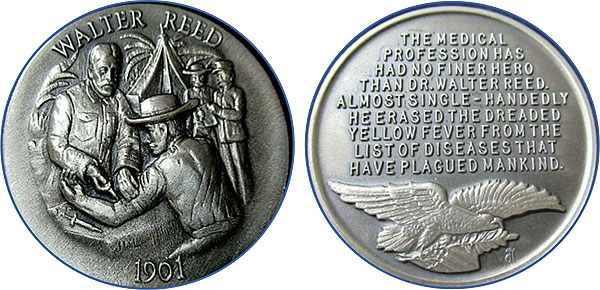 |
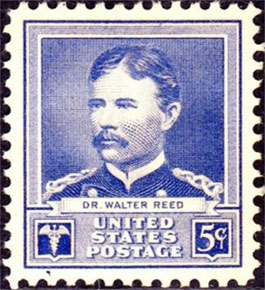 |
Walter Reed Sterling silver medal by Longines Symphonette |
Reed 5 cent |
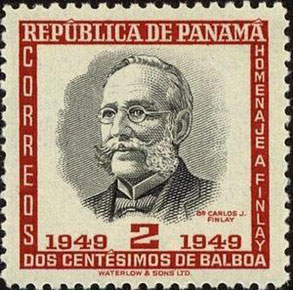
The commission was led by Major Walter Reed (Spt. 13, 1851-Nov. 22,1902) starting in 1901. Under his leadership the team confirmed the theory put forth by Cuban physician Carlos Finlay (Dec.3, 1899-Aug. 20,1915) 20 years previously (1881) that the “vector”, the source of disease transmission, as it is called, is transmitted by a particular mosquito species-of the Aedes aegypti, rather than by direct contact. This insight gave impetus to the new fields of epidemiology and biomedicine. Reed had first observed in 1896 in the area of the Potomac River that soldiers did not get yellow fever from various activities, such as drinking river water, but rather soldiers that had participated in activities such as walking or hiking in swampy areas where there were mosquitos caught yellow fever.
While at Camp Lazear-named for a member of the commission, Jesse William Lazear (May 2, 1866-September 26, 1900), who had previously died of yellow fever- in Cuba, the commission conducted vigorous experiments. First proving that yellow fever was not spread by contact by using clothing and bedsheets of those who had had yellow fever.
The commission then went on to conduct human trials, by having volunteers who consented to being experimented on. The volunteers agreed to being bitten by mosquitos to verify that they were the carriers, and if they got yellow fever, if that gave them immunity. Volunteers were paid $100 (the equivalent to about $3000 nowadays) and an additional $100 if they got yellow fever- not the best of deals if you die from it, if you ask me.
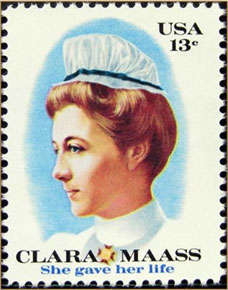
The volunteers included Jesse Lazear who died, British-American Major James Carroll (June 5, 1854-Sept. 16, 1907) who was also an army physician and survived, and Clara Louise Maass (June 28, 1876-Aug. 24, 1901), who was a nurse bitten by an infection carrying mosquito and survived, and was then exposed again to discover if there was immunity - and died, proving that there was no immunity to yellow fever. After public outcry to her death there was no more human experimentation allowed. Aristides Agramonte (June 3, 1868-Aug. 19, 1931) was a Cuban-American physician, pathologist and bacteriologist with expertise in tropical medicine who in 1898 was appointed as an Acting Assistant Surgeon in the U.S. Army and sent to Cuba to study a yellow fever outbreak and later served on the yellow fever Commission.
The results of the Yellow Fever Commission were put into use by Major General William C. Gorgas (about 1859-1920) who is best known for his work in reducing the transmission of yellow fever and malaria by controlling the mosquitoes that carry them. It was at a time when there was considerable skepticism and opposition to such measures.
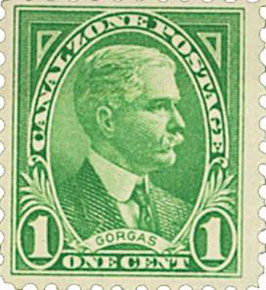
He was a physician and 22nd Surgeon General of the United States. After the end of the Spanish-American War, Gorgas was appointed Chief Sanitary Officer in Havana, Cuba, from 1898 to 1902, and worked to eradicate yellow fever and malaria.
As chief Sanitary officer of the canal project (Panama) from 1904 to 1914, Gorgas implemented far-reaching sanitary programs including the draining of ponds and swamps, fumigation, mosquito netting, and public water systems. These measures were instrumental in facilitating the construction of the Panama Canal. Gorgas was made Surgeon General of the Army in 1914 and was highly involved in WW I and retired in 1918 to become director of the Yellow Fever Control Program of the Rockefeller Foundation’s International Health Board.
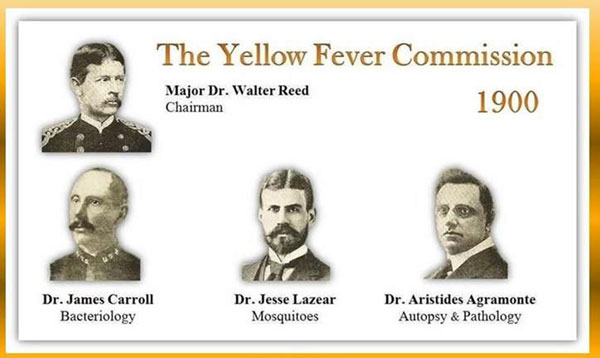
Have an interesting numismatic topic you’d like to share with your fellow NOW members?
Send your article to evan.pretzer@protonmail.com today!!!